South Korea - Jeju Island
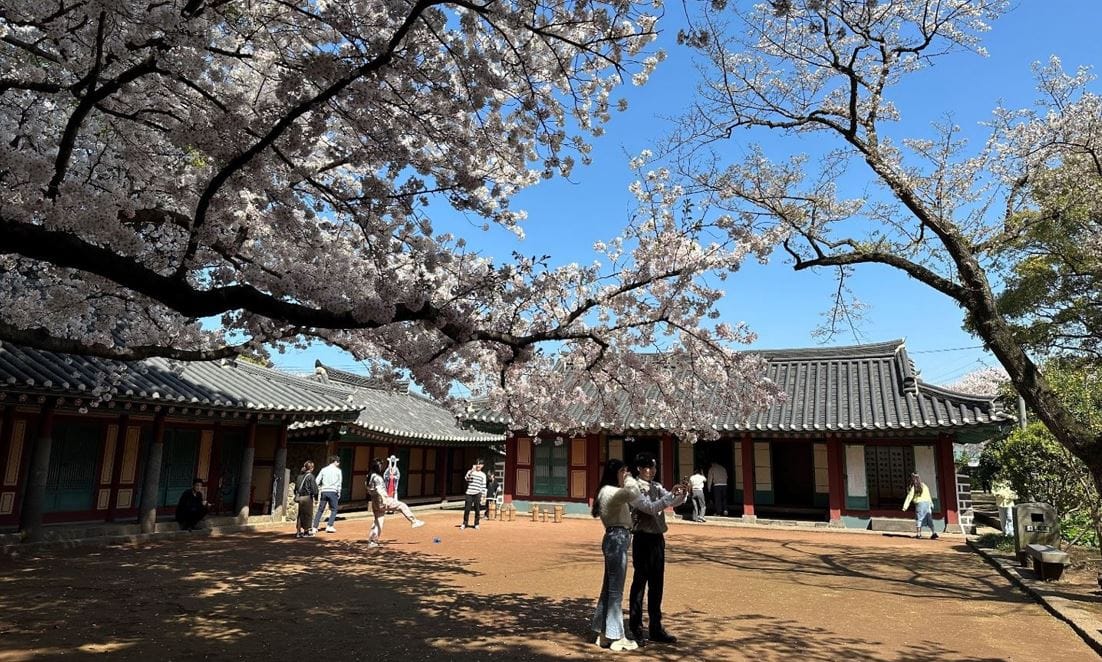
At the end our tour of South Korea we decided on a few days on Jeju island, located off the southern coast of the mainland. It’s 3 times bigger than Singapore and known as the Hawaii of South Korea for its natural beauty and mild climate all year round. We arrived to glorious sunshine and after picking up our hire car decided to find the best spots to view the cherry blossoms for which the island is renowned at this time of the year.
We were met with blank faces when we asked for directions to Cherry Blossom Street, however getting lost at one point we realised we were driving through that very street!
Lined with cherry trees the blossoms were magnificent, as they were at the Samgseonghyeol Shrine and Halla Arboretum, at the foot of Mt Hallasan - a dormant volcano, the highest peak in South Korea at 1,950M above sea level, located in the centre of the island within a huge national park, popular for hiking.
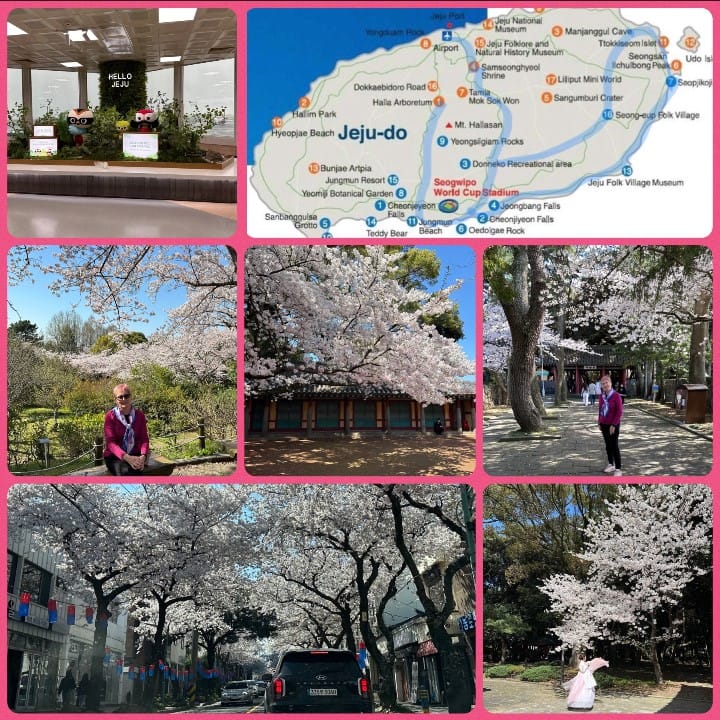
We decided to stay on the south side of the island, an hour from the airport and city, as it’s more picturesque with waterfalls, volcanic landscapes, lava tubes, stunning beaches and lush forests - most of which will remain a complete mystery as it rained for our remaining time on Jeju - the fog so low often we could only see a few metres ahead.
At least on the first evening we could wander along the waterfront, finding an unpretentious restaurant which served delicious mackerel.
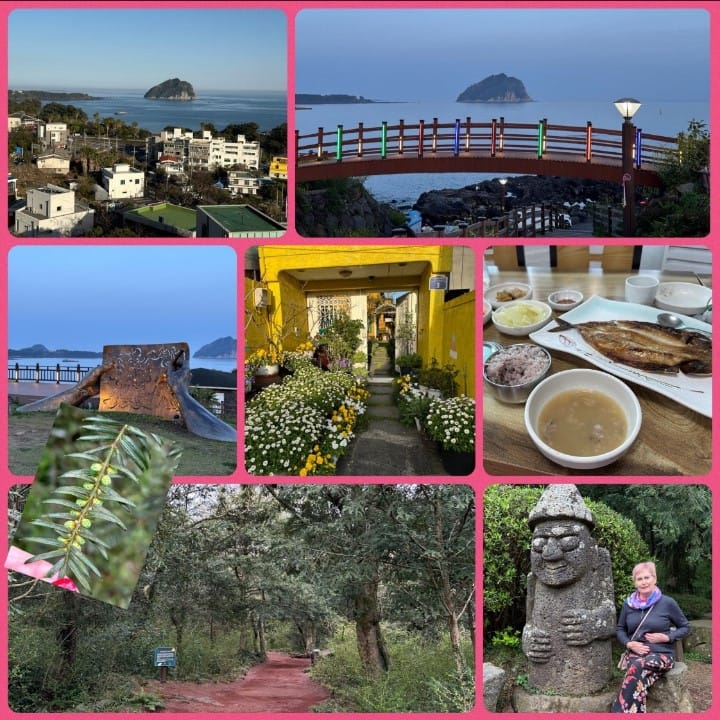
We scored good weather for a few hours the following morning, able to meander through Bijarim Forest, home to hundreds of bija (nutmeg yew) trees, many have lived for 500 to 700 years, earning the forest the nickname Forest of a Thousand Years. It’s the largest forest in the world to be made up of one plant species.
Jeju is famous for its traditional stone statues called dol hareubang. These statues, which are dotted all around the island, resemble grandfathers and believed to bring good luck and protection.
By the early afternoon the rain had set in. Jeju is a popular holiday destination for Koreans and other Asians - the flight path from Seoul to Jeju one of the busiest in the world.
Along with natural wonders, the island is also dotted with museums - a wide range to suit every taste - teddy bears, Snoopy, Greek Mythology, chocolate, tea, Hello Kitty, liquor - and so the list goes on.
Our choices covered an eclectic mix. Firstly the Arte Museum - Korea's largest immersive media art exhibition.
As you can see below, a wonderland of rooms filled with mirrors reflecting moving images: camellias, orchids and other flowers floating into infinity; forest scenes with playful pandas while elephants, lions and giraffe strutted majestically; waterfalls and a surf beach messed with our minds reflecting off mirrors and flat walls.
Finally, a huge space, similar to The Lume in Melbourne, the walls projected with European art - a complete history from Rembrandt and Rubens to Monet, Van Gogh, Vermeer, Degas, Renoir and Klimt. What a joy to see so many wonderful works in just one place!
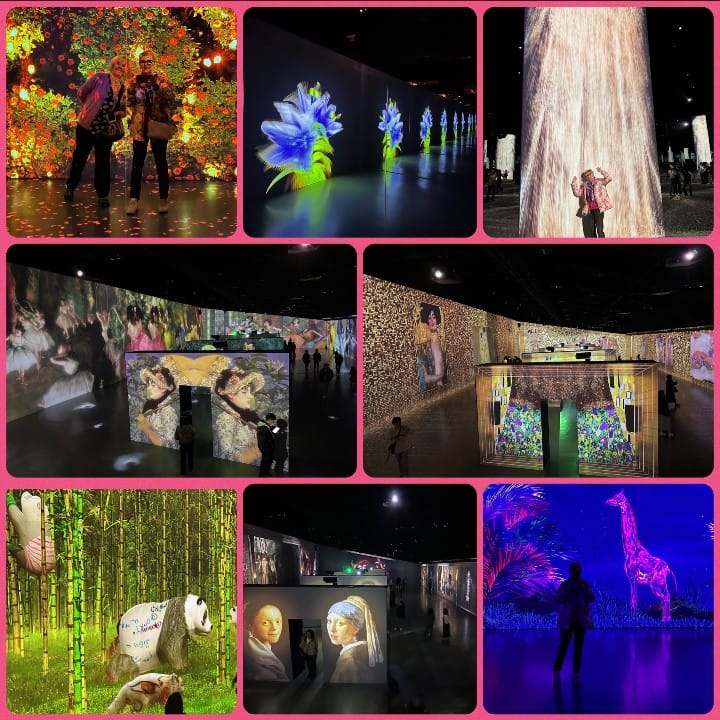
Our next highlight was Bonte Museum, a low sleek set of concrete buildings designed by Tadao Ando (he designed scores of museums including the Suntory Museum in Osaka). It was built in 2012 to house a collection of works, carefully selected over 30 years. Korean timber figurines and other traditional works as well as some modern art works.
The two stand outs were Yayoi Kusama’s Pumpkin and one of her Mirrored Infinity Rooms, which I’ve been keen to see since viewing some of her work as part of the Light Exhibition at ACMI in Melbourne a few years ago.
It’s a fabulous experience to enter an enclosed darkened room, filled with ever changing coloured light bulbs, reflected into infinity on the mirrored walls and surrounding pond of water - truly magical.
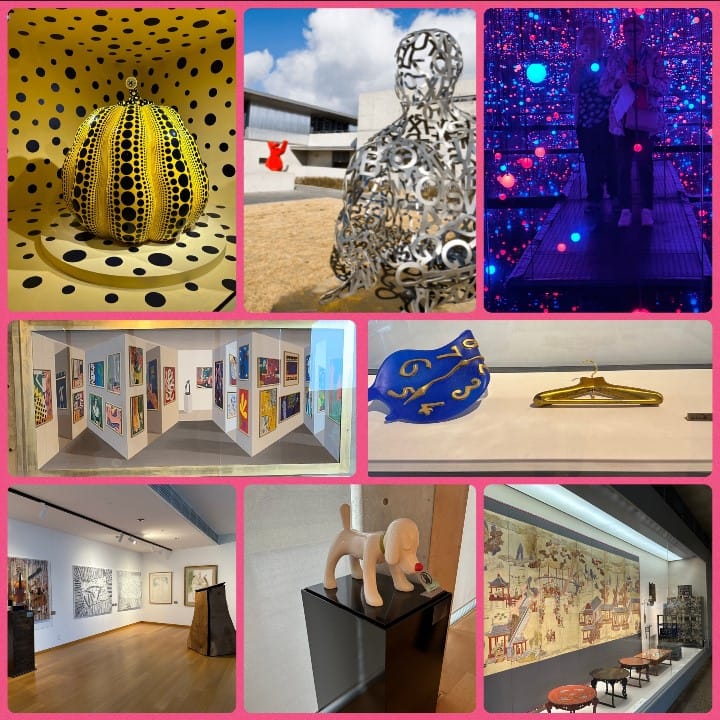
I found a video on YouTube - the surrounding landscape and views of interest as we were lucky to find the car park, the day was so grey and the fog low and thick we couldn’t see a thing. It’s 10 mins, but the first 5 though is enough to give you an idea and to see Yayoi’s works:
Unique to Jeju is the Haenyeo Museum, which honours the tradition, dating back to the 17th century, of women diving for food when Jeju’s menfolk would disappear for weeks at a time on fishing boats. Octopus, abalone, clams and seaweed provided an essential food source, particularly since the Asian staple of rice is unable to grow on Jeju’s wild and windy shores.
It’s dangerous, diving to depths of up to 30m, Haenyeo women learn a technique to hold their breath for over three minutes, without the use of any breathing apparatus, just a flimsy swimming garment and a mask - they only started to use wetsuits in the 1980s.
This free diving is a dying skill today, all the women are aged over 60, with a few still diving well into their 80s - an iconic and unique feature of Jeju’s cultural history.
We didn’t have time to see the Citrus Museum which may have been of interest as the island is known for its tangerines, which were delicious - lots of cute souvenirs around the island though - hats, raincoats, soft toys.
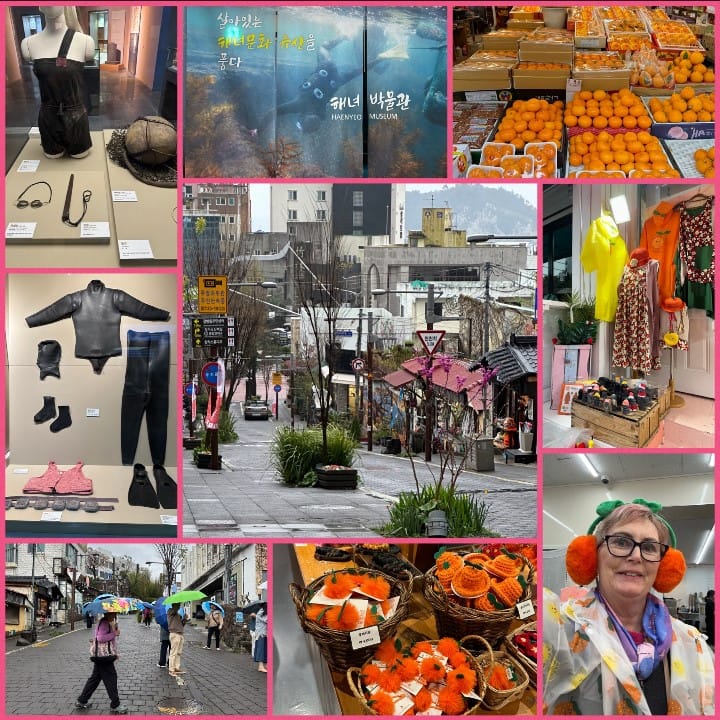
Despite the weather we loved Jeju Island, especially the museums - a perfect way to spend our time on the rainy days.
We hope to return one day in the summer to see all the natural wonders for which Jeju is known, but eluded us do to the low lying cloud and fog.
